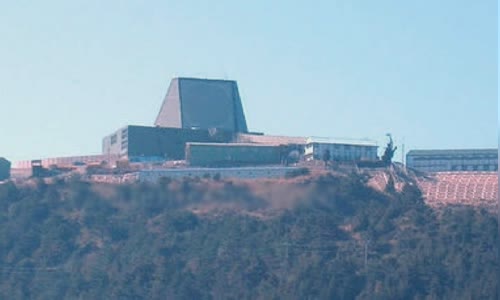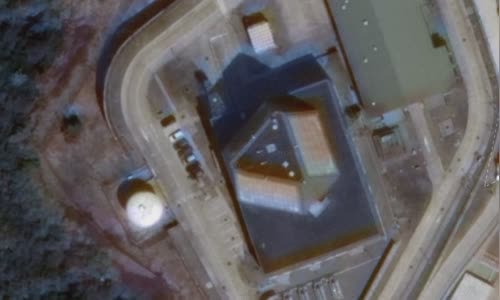A $ 1.4 billion real-world radar on Taiwan Island can help the US detect Chinese ballistic missiles as soon as they leave the launch pad.
The AN / FPS-115 "Pave Paws" long-range field radar, developed by the US for the early detection of ballistic missiles and aircraft, is increasingly playing an increasingly important role for Taipei and Washington in the face of tension.

The Pave Paws radar is located in the northern part of Taiwan Island Photo: Wired
Experts say that the Pave Paws system, located atop a 2,600 meter high mountain in Hsinchu district, north of Taiwan's island, will be the "eye of the god" to help warn early Chinese ballistic missile attacks against
The United States agreed to sell an AN / FPS-115 system to Taiwan in 2000, it was installed in 2006 and put into service with the island defense force in 2013. The system is worth $ 1.4 billion and
The AN / FPS-115 system can detect ballistic missiles launched from a distance of 5,000 km and capture targets with high accuracy from a distance of 2,000 km.
Observers believe that the role and features of the AN / FPS-115 "eye of the god" make it the top Chinese strike target in the potential plan to recall Taiwan by force.
However, even when this scenario plays out, the Pave Paws system will still bring a lot of important information to Taiwan and the US.
"The island has invested a lot of resources to protect the radar cluster, including missile shields including Patriot III long-range air defense systems, Thien Cung 2 and 3 domestic air defense complexes, early warning aircraft.
Taipei also appears to install satellite positioning jamming systems around the Pave Paws radar station to prevent the Chinese military from obtaining its exact coordinates.

Radar cluster AN / FPS-115 on satellite image Photo: Google Earth
Many Taiwanese have criticized the arrival of the Pave Paws, claiming that it is the US radar base and does not contribute to the island's defense capabilities, and the cost of implementing and operating the system is also marked.
In addition to the initial $ 1.4 billion amount, Taiwan also has to spend nearly $ 25 million / year to maintain and maintain the AN / FPS-115 system.
Su Tzu-yun, professor of strategy studies at Tamkang University in Taipei, said sharing intelligence between the US and Taiwan is crucial in the context of the Taiwan Strait becoming a hotspot with potential flare.
"Pave Paws is very powerful, it can detect ballistic missile attacks from submarines. Real-time data sharing with the United States allows this radar system to capture targets and assist in the process."
Beijing is increasing its military presence in the South China Sea and East China Sea to compete with Washington's activities in the region.
Ou Si-fu, an expert at the Taiwan Defense and Security Research Institute, said Chinese submarines can hide in the South China Sea to avoid a preemptive strike and become an effective deterrent when
"Beijing's new-generation submarines can carry JL-3 ballistic missiles with an estimated range of 14,000 km, threatening much of the US territory. That makes the radar system in Taiwan's realm of sight."



 Jerry Wickizer
Jerry Wickizer







